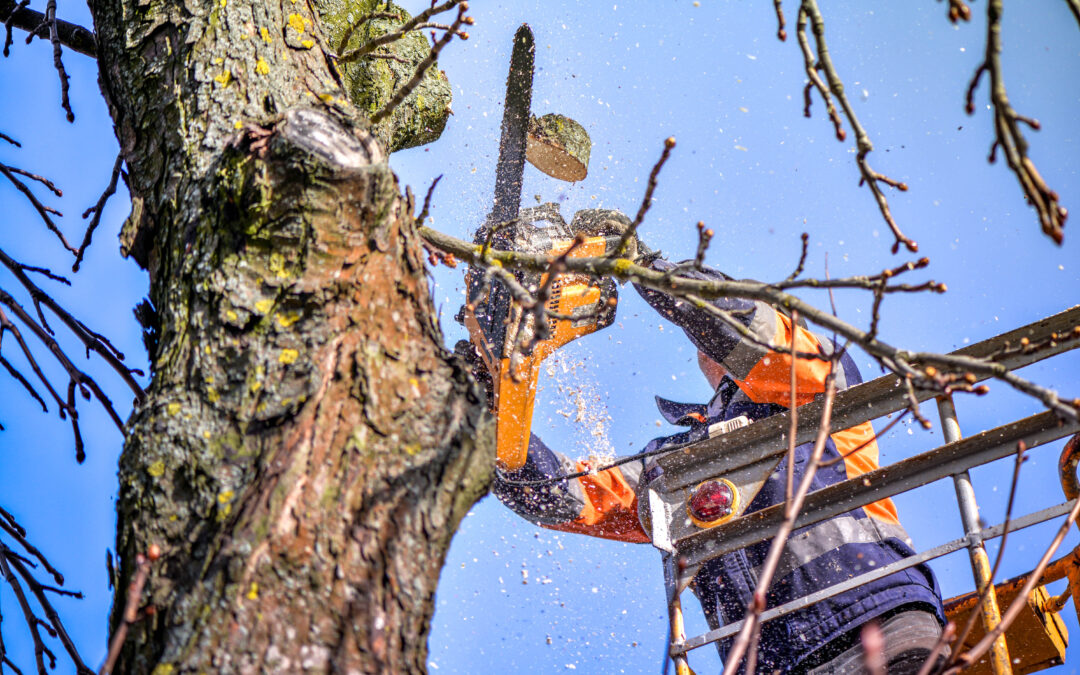Keeping your trees healthy and looking their best requires more than occasional maintenance. Two of the most common services homeowners hear about are tree trimming and tree pruning and while the terms are often used interchangeably, they serve very different purposes. Understanding the difference helps you make the right choice for your landscape and ensures your trees stay safe, healthy, and attractive year-round. Here’s what every Utah homeowner should know.
What Is Tree Trimming?
Tree trimming focuses on improving the appearance, shape, and structure of your trees. This service is ideal for homeowners who want cleaner, more polished curb appeal.
Key goals of trimming:
- Removing overgrown or unwanted branches
- Shaping the canopy for symmetry and aesthetics
- Preventing branches from interfering with roofs, driveways, fences, or utilities
- Improving sunlight penetration for surrounding plants and lawn
Best time for trimming:
Most ornamental trees can be trimmed throughout the year, though late winter and early spring are typically the most effective times for reducing excess growth.
When trimming is recommended:
- Your tree looks overgrown or misshapen
- Branches are blocking walkways or street views
- You want to improve the appearance of your landscape
What Is Tree Pruning?
Tree pruning is a more technical service focused on long-term tree health, safety, and structural strength.
Goals of pruning:
- Removing diseased, dead, or damaged branches
- Preventing limbs from rubbing or crossing each other
- Reducing risk of falling branches
- Improving structural integrity to withstand Utah’s wind and winter storms
- Encouraging healthy new growth
Best time for pruning:
Late fall through early spring is ideal, when most trees are dormant and more receptive to corrective work.
When pruning is recommended:
- You see dead or cracked branches
- A tree has suffered storm damage
- Branches are growing inward, crossing, or touching
- There are signs of disease or decay
Tree Trimming vs. Pruning: The Key Differences
| Tree Trimming | Tree Pruning |
| Improves appearance and shape | Improves health and safety |
| Removes excess or overgrown branches | Removes dead, weak, or diseased branches |
| Performed for aesthetic purposes | Performed for long-term structural strength |
| Encourages fuller, balanced growth | Prevents decay, breakage, and disease spread |
| Typically done more frequently | Done less often but more strategically |
Both services are essential at the right time—but your tree’s age, location, and condition determine which one it needs.
Why Professional Service Matters
Many homeowners try DIY trimming or pruning, but incorrect cuts can damage a tree permanently. Poor trimming can lead to uneven growth, while improper pruning may weaken the tree or invite disease.
Professional arborists understand:
- Proper cut placement
- How much to remove at one time
- How to shape the canopy without stressing the tree
- How to remove hazardous limbs safely
- Species-specific growth patterns
At Nyes Tree Service, our trained team ensures your trees are cared for the right way, using industry-standard techniques that keep them strong and beautiful.
Which Service Do Your Trees Need?
Here’s a simple way to decide:
- Choose trimming if your tree looks overgrown, needs shaping, or is interfering with structures.
- Choose pruning if you’re concerned about safety, disease, or structural problems.
If you’re unsure, our team can evaluate your trees and recommend the best service for long-term health and appearance.
Keep Your Utah Trees Safe, Healthy, and Beautiful
Tree trimming and pruning each play an important role in landscape maintenance. With Utah’s changing seasons, strong winds, and heavy winter storms, proper tree care is essential for preventing hazards and keeping your property looking its best.
Contact Nyes Tree Service today to schedule trimming or pruning services and protect the long-term health of your trees.

